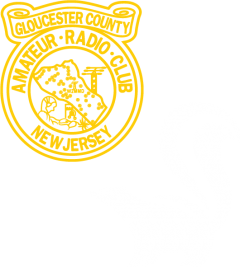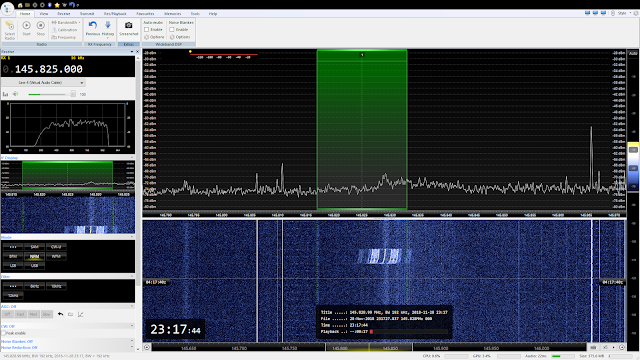
Tonight on the Thursday night GCARC net there was some discussion about digipeating your signal thru the ISS and NO-84 satellite. This is detailed in the December 2018 issue of QST so I won’t repeat those details, but here’s a quick write-up of that process and how I made it work.
Both NO-84 and the ISS use the standard AX-25 packet protocol that’s used for terrestrial APRS, so you can use any of the radios that already have APRS built in. Many HTs will work, but I used the SDR radios at the GCARC clubhouse by connecting remotely through the VPN connection (see this article on how the VPN control works). I connected my local copy of SDR Console to the server copy on the clubhouse satellite computer and used the Funcube radio as the receiver. I also connected my local copy of of PST Rotator in client mode to the server copy at the clubhouse so I could control the rotator remotely. After that I was able to hear the satellite.
But we don’t just want to hear the satellite – we want to decode the packets. For that I needed two additional pieces of software – the UZ7HO Soundmodem program that works like Terminal Node Controller (TNC) and the ON6MU UISS program to view and send the data. Soundmodem connects to a virtual audio cable from the SDR Console and feeds that audio into the modem program where the packets are decoded. In that sense it works like a 1980s-style TNC except that no wires are required.
That program then connects to UISS and sends the packets thru a TCP link where they’re viewed and the APRS data is decoded.
OK, so now I could receive the packets, but how could I transmit? Here’s the cool part – since I’m in a HOA-restricted townhouse I don’t have external antennas that are anywhere near as functional as those at the clubhouse. I do, however, have 2 meter and 70 cm M2 eggbeater antennas in my attic. And in satellite work the critical antenna you need is on the receive side – you can use suboptimal antennas for transmitting by simply increasing your power. So I used the clubhouse radio and antennas for receiving but set up PST Rotator and UISS to use my local transmitter for transmitting thru the 2 meter eggbeater with 25 watts from my 991a. That’s more power than is recommended for satellite work, but I’m using a non-directional antenna whose signal also needs to penetrate my roof, so I think it’s justified.
So I set up the station that way, waited for PST Rotator to indicate the beginning of the pass and start moving the antennas, and then started looking (yeah, you LOOK for packets in SDR, you don’t only listen for them). And there it is – that’s what an AX-25 packet looks like in SDR. So now I know that the satellite is probably hearing ground stations so I started pressing the Text Data and Position buttons in UISS. This transmitted the respective packets using the 991a and the eggbeater in the attic.
This was a low pass so I only got one APRS packet thru, but one was enough to get listed on the ariss.net website of stations heard by the ISS. And if you look at the map below you’ll see WB2MNF sitting comfortably in Deptford.
This is a pretty optimal setup, but you may also be able to do OK with any other radio that talks APRS. I’ve been heard by the ISS using my FTM-400 mobile radio for transmitting and the SDR radio with a local antenna for receiving. Give it a try, and if you’re successful you can go into work the next day and tell your coworkers “I talked to the space station last night”. Imagine the reaction you’ll get!
73 de Jon WB2MNF


as this was my first attempt with contacting the iss, I failed to properly set the output frequency coming from the space station. However, I did receive your packets going up from Logan twp. hope to make a full contact with you again soon.